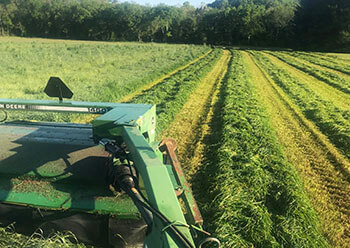A Year in Review -- Forages
Dec 30, 2019

Brett Jones, an agronomist for Tennessee Farmers Cooperative, shares his statewide take-aways from the 2019 hay season.
What date is best for early cutting? Before the second week of May. May target date for optimum quality is May 1.
What is the best cutting height for hay? Excluding Bermuda grass, I recommend at least 3 ½ inches, and 4 inches or more is even better! Measurements taken at the shop on concrete will always be lower in the field, so always measure the actual plants that have been cut and adjust accordingly.
What’s the best way to estimate your soil’s nutrient needs? Soil testing! Your local Co-op can assist you with planning a soil-testing program and can customize a fertilizer plan to ensure your pastures and hayfields have the nutrients needed to produce high-quality, high-yielding grass.
- Early cutting has its benefits.
What date is best for early cutting? Before the second week of May. May target date for optimum quality is May 1.
- Many are cutting it too close.
What is the best cutting height for hay? Excluding Bermuda grass, I recommend at least 3 ½ inches, and 4 inches or more is even better! Measurements taken at the shop on concrete will always be lower in the field, so always measure the actual plants that have been cut and adjust accordingly.
- Nutrient deficiencies must be addressed.
What’s the best way to estimate your soil’s nutrient needs? Soil testing! Your local Co-op can assist you with planning a soil-testing program and can customize a fertilizer plan to ensure your pastures and hayfields have the nutrients needed to produce high-quality, high-yielding grass.